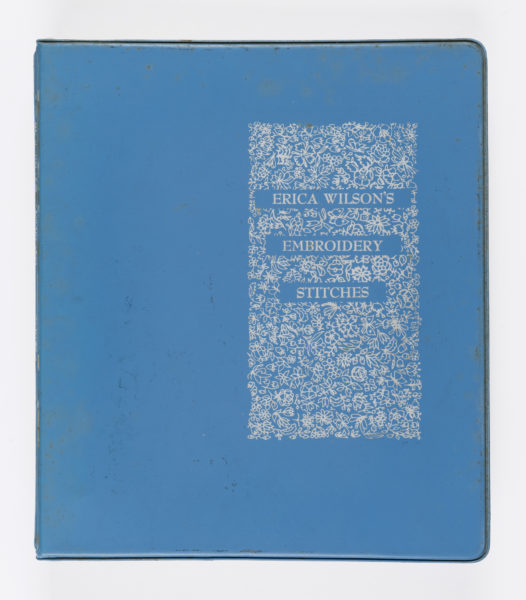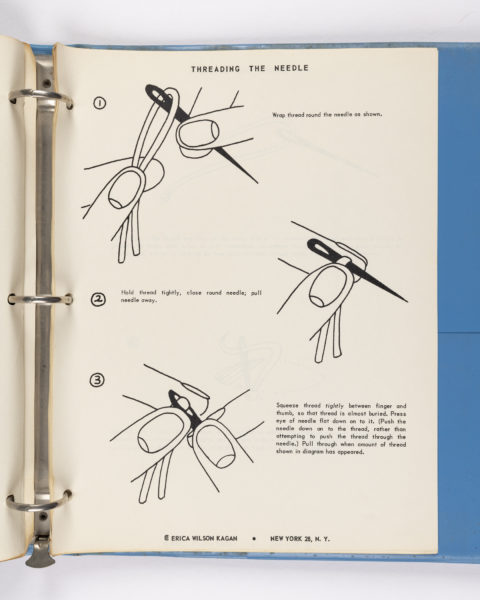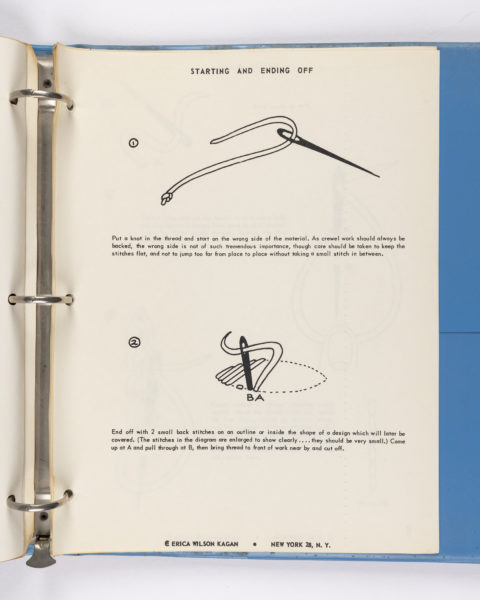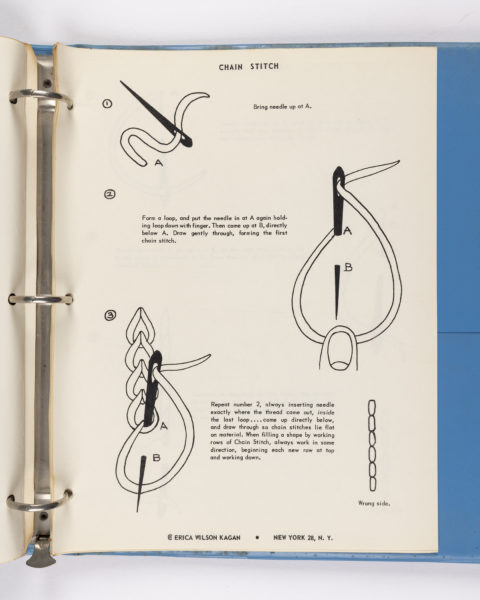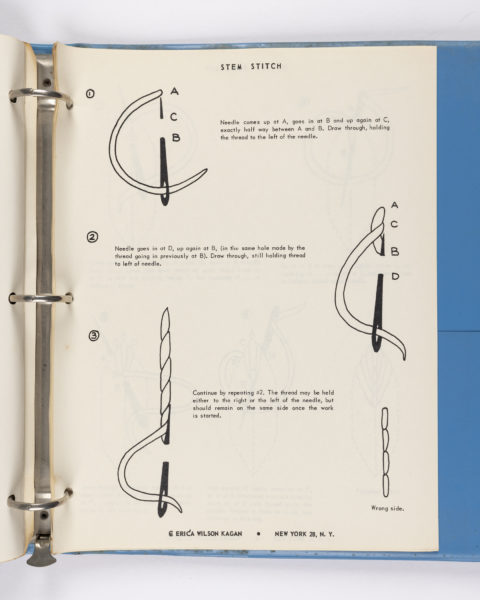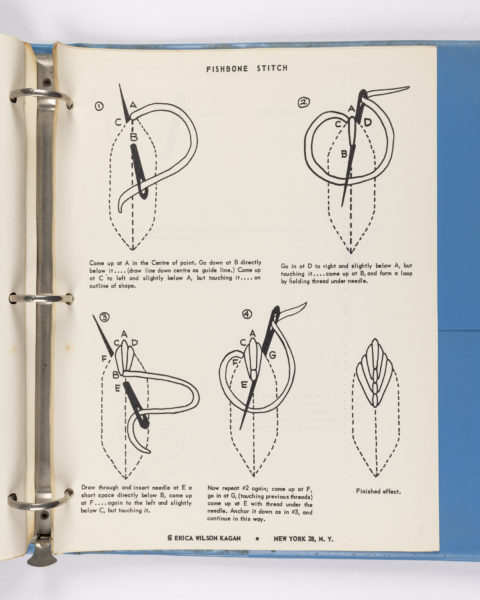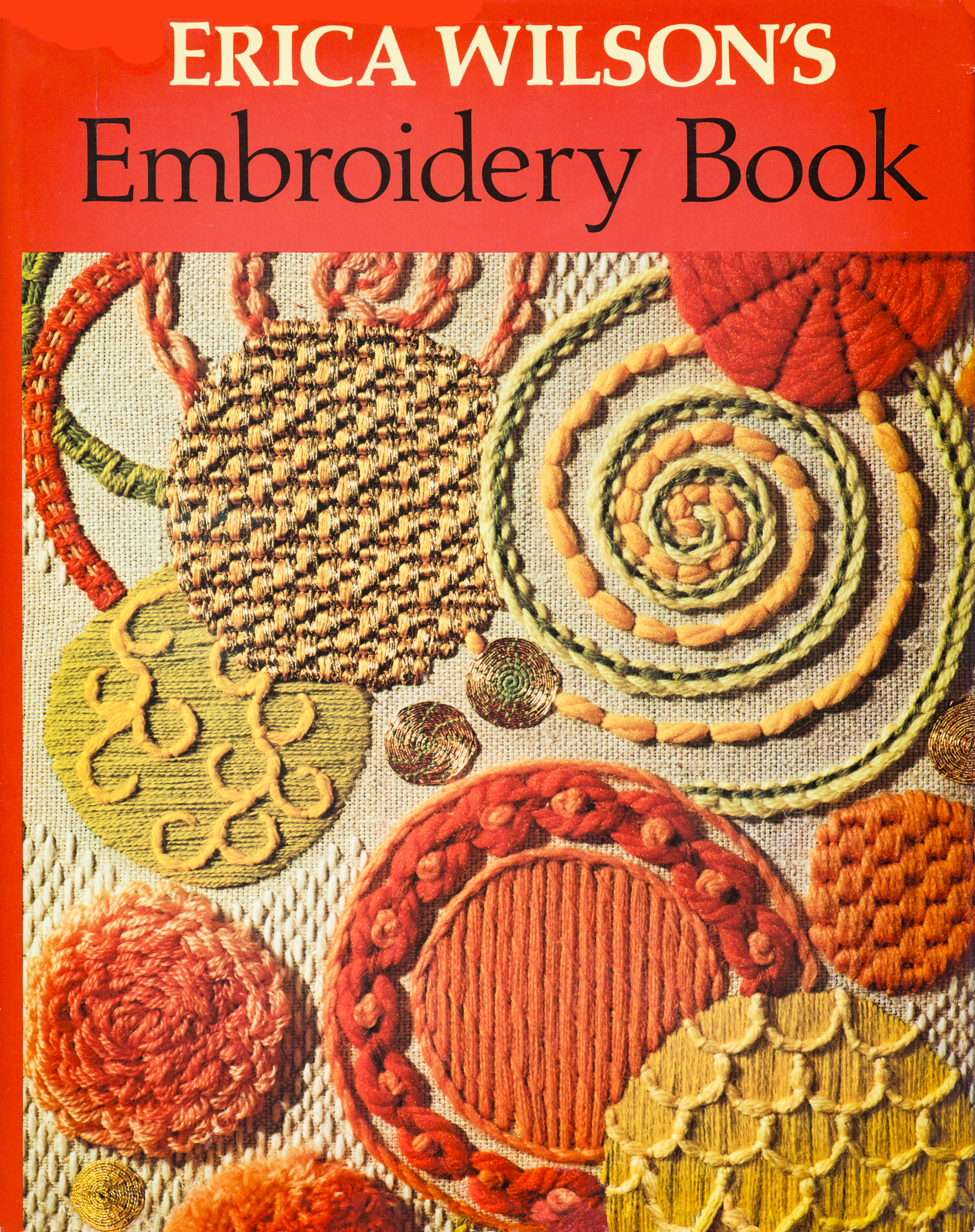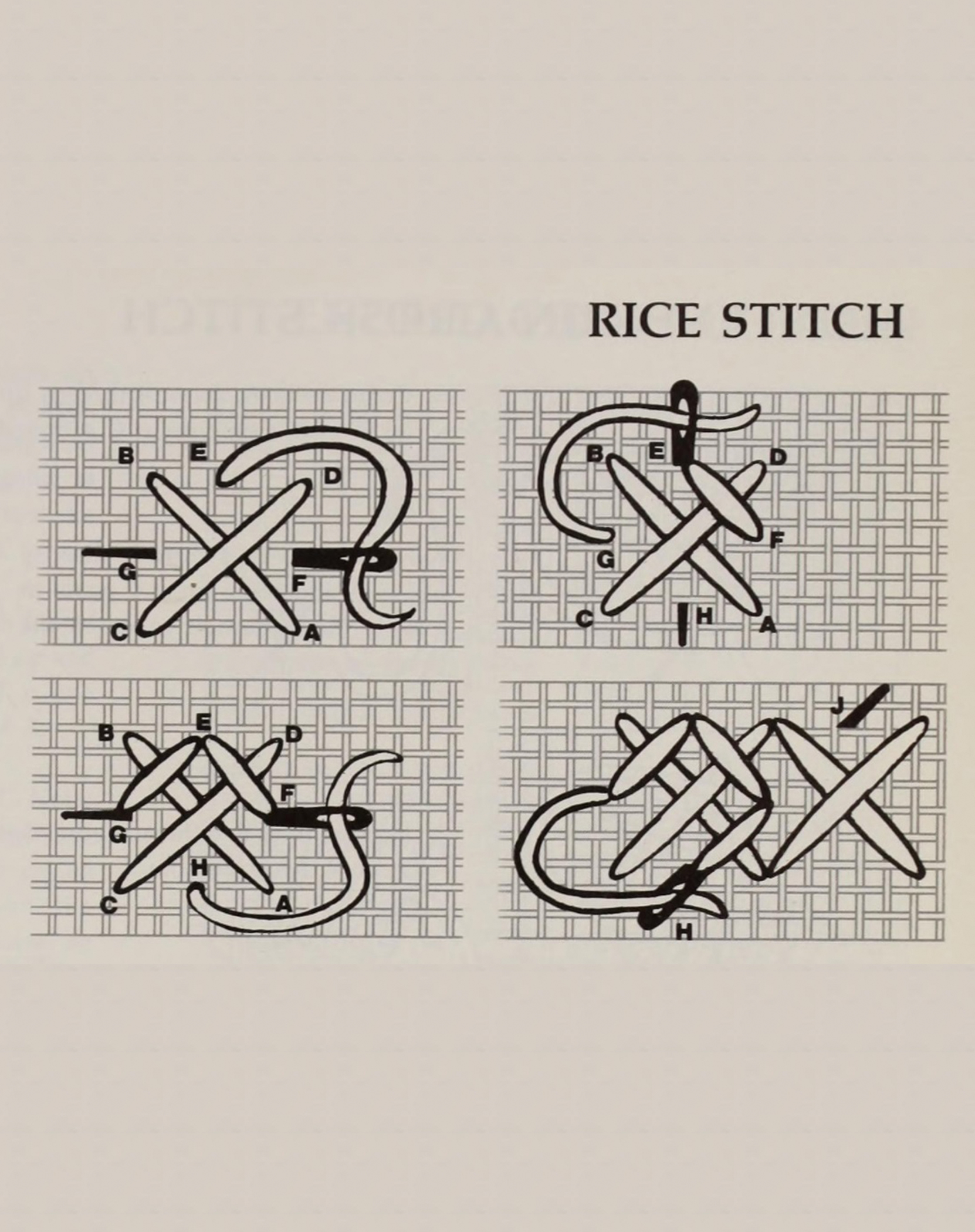Erica caught a wave of craft enthusiasm in the United States that would build steadily into a billion-dollar industry by the 1970s. Her success was originally based on the popularity of the classes she taught in Millbrook and later in New York City and Nantucket, but as the business grew she had less time for the teaching that she so loved as she spent more of her time designing for kits and programming and writing her books. Her designs were accessible in materials and techniques and popular in design and color. The popularity of her designs led to a contract with the yarn company Columbia–Minerva and ensured that her kits were widely distributed around the country.
Widely known for her teaching, Erica was asked by women in Williamsburg to teach a class for them, but she was too busy to travel there. Instead, she created her first correspondence course.
Gift of Edith Bouriez (Principal Teacher and Assistant to Erica Wilson) 2019.0003.001
These stitched designs are samples of the first two correspondence courses, I and II. Designed as a matched set, the second employed the same color scheme but more advanced stitches.
Gift of the Family of Erica Wilson 2015.0047.068.001 and .002
The Creative Needle was Erica’s newsletter. Erica stayed in touch with her students by mailing this publication and her own catalogs.
Courtesy, the Winterthur Library, Joseph Downs Collection of Manuscripts and Printed Ephemera, Gift of Edith Bouriez
Erica held week-long seminars on Nantucket during the summers from 1974–1984. Mornings were lectures and demonstrations; in the afternoon, Erica and Edie each hosted half of the class in their back gardens. The white owl was one of the projects they taught.
Brochure and photograph courtesy, the Winterthur Library, Joseph Downs Collection of Manuscripts and Printed Ephemera, Gift of Edith Bouriez; needlework on loan from the Family of Erica Wilson; photo from the Inquirer and Mirror, March 20, 1975, p.3.
Erica’s first book, Crewel Embroidery was a groundbreaking and durable best-seller. She was encouraged to publish by Elinor Parker (1906–2001), who took classes with her at The Cooper Union, and the book’s editor was Elizabeth Riley, also her student there.
From Erica Wilson’s Crewel Embroidery by Erica Wilson. (New York: Scribner, 1962). Reprinted with the permission of Scribner, a division of Simon & Schuster, Inc. All rights reserved.
Erica Wilson’s Embroidery Book was much larger and more comprehensive than Crewel Embroidery and remains a valuable resource for those seeking to learn embroidery. Her husband Vladi drew the illustrations for her correspondence courses and early books.
To produce the initial stitch instructions for Erica’s correspondence courses and books, Vladi watched Erica execute each stitch and replicated some himself for her to ensure their accuracy. He drew illustrations for 61 stitches in Crewel Embroidery and 193 in Erica Wilson’s Embroidery Book.
From Erica Wilson’s Embroidery Book by Erica Wilson. (New York: Scribner, 1973). Reprinted with the permission of Scribner, a division of Simon & Schuster, Inc. All rights reserved.
This series of Erica’s Elizabethan ladies framed the first six chapters in Erica Wilson’s Embroidery Book and represent crewel embroidery, needlepoint, silk and gold threads, black work, white work, and stump work. The version for silk and gold threads is now lost and a photograph from the cover of her book The Craft of Silk and Gold Embroidery and Stump Work is shown here. Erica’s first Elizabethan lady was stitched in white work; she designed and embroidered it at the Royal School of Needlework.
Gift of the Family of Erica Wilson 2015.0047.005.003; Gift of the Family of Erica Wilson 2015.0047.005.002; Erica Wilson, The Craft of Silk and Gold Embroidery and Stump Work (New York: Charles Scribner’s Sons, 1973), cover; Courtesy of the Family of Erica Wilson; Gift of the Family of Erica Wilson 2015.0047.005.001; Courtesy of the Family of Erica Wilson
Erica also taught needlework to those who tuned in to watch Erica, a television show produced by WGBH and broadcast on PBS stations nationally. This panel was a prototype of a three-panel screen originally designed for Isabel Marsh (Mrs. John B. Marsh), one of Erica’s early students. A related larger design appears on this set for Erica’s 1975 season of her television show. Erica had to see her designs actually embroidered to make sure they conveyed the intended effect.
Needlework and photo courtesy of the family of Erica Wilson



